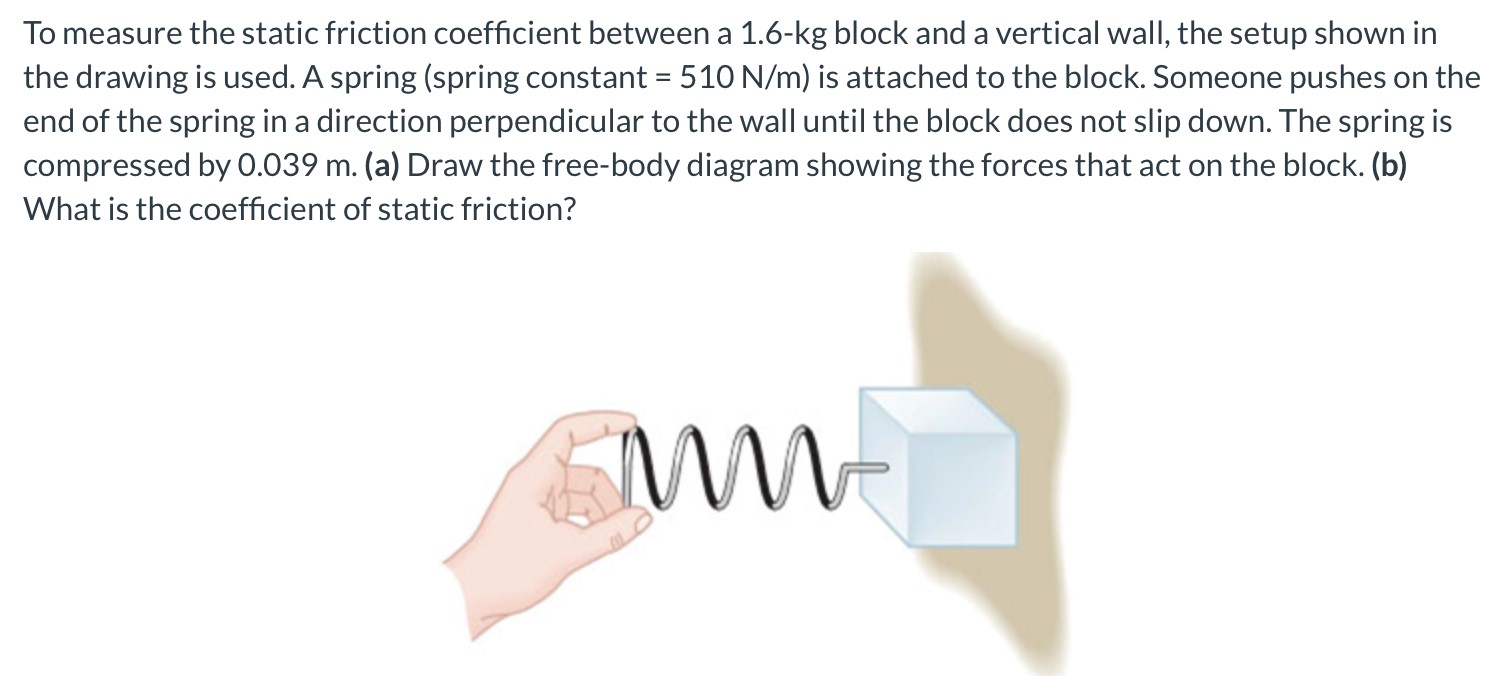To measure the static friction coefficient between a 1.6−kg block and a vertical wall, the setup shown in the drawing is used. A spring (spring constant = 510 N/m ) is attached to the block. Someone pushes on the end of the spring in a direction perpendicular to the wall until the block does not slip down. The spring is compressed by 0.039 m. (a) Draw the free-body diagram showing the forces that act on the block. (b) What is the coefficient of static friction?
